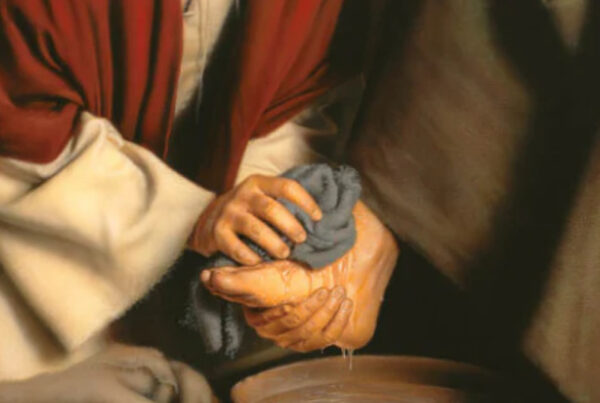Day 4
On the third day a wedding took place at Cana in Galilee. Jesus’ mother was there, and Jesus and his disciples had also been invited to the wedding. When the wine was gone, Jesus’ mother said to him, “They have no more wine.”
“Woman, why do you involve me?” Jesus replied. “My hour has not yet come.”
His mother said to the servants, “Do whatever he tells you.”
Nearby stood six stone water jars, the kind used by the Jews for ceremonial washing, each holding from twenty to thirty gallons.
Jesus said to the servants, “Fill the jars with water”; so they filled them to the brim.
Then he told them, “Now draw some out and take it to the master of the banquet.”
They did so, and the master of the banquet tasted the water that had been turned into wine. He did not realize where it had come from, though the servants who had drawn the water knew. Then he called the bridegroom aside and said, “Everyone brings out the choice wine first and then the cheaper wine after the guests have had too much to drink; but you have saved the best till now.”
What Jesus did here in Cana of Galilee was the first of the signs through which he revealed his glory; and his disciples believed in him.
After this he went down to Capernaum with his mother and brothers and his disciples. There they stayed for a few days.
When it was almost time for the Jewish Passover, Jesus went up to Jerusalem. In the temple courts he found people selling cattle, sheep and doves, and others sitting at tables exchanging money. So he made a whip out of cords, and drove all from the temple courts, both sheep and cattle; he scattered the coins of the money changers and overturned their tables. To those who sold doves he said, “Get these out of here! Stop turning my Father’s house into a market!” His disciples remembered that it is written: “Zeal for your house will consume me.”
The Jews then responded to him, “What sign can you show us to prove your authority to do all this?”
Jesus answered them, “Destroy this temple, and I will raise it again in three days.”
They replied, “It has taken forty-six years to build this temple, and you are going to raise it in three days?” But the temple he had spoken of was his body. After he was raised from the dead, his disciples recalled what he had said. Then they believed the scripture and the words that Jesus had spoken.
Now while he was in Jerusalem at the Passover Festival, many people saw the signs he was performing and believed in his name. But Jesus would not entrust himself to them, for he knew all people. He did not need any testimony about mankind, for he knew what was in each person. – John 2
Devotional:
Jesus was on mission yet he took the time to attend a wedding feast, which in those days were week-long festivals. It was important to him to take time to be part of events like this because he valued people and came to earth to be in a relationship with people.
Everyone would be invited to the wedding and careful planning was needed to accommodate many. To run out of wine was more than embarrassing. It broke the strong unwritten laws of hospitality on that day. Mary was probably not asking Jesus to do a miracle; she simply hoped that her son would help solve the problem and find some more wine. Jesus’ answer to Mary is difficult to understand, but maybe that is the point. Although Mary didn’t know what he was going to do, she trusted him to do what was right. She recognized that Jesus was more than her human son; he was the Son of God and would deal with the problem as he saw best to deal with it.
The stone water jugs were for ceremonial washings and could hold 20 to 30 gallons. According to Jewish law, people became symbolically unclean by touching everyday objects. Before eating, they would pour water over their hands to cleanse themselves-not of dirt and grime but of any bad influences associated with what they had touched. Remember, the germ theory had not yet come on the scene.
When the new wine was brought forth, the people looked everywhere but to God for meaning as to where this wine came from but when the disciples saw what Jesus had done, they believed. The miracle had shown them his power over nature and the way he would go about his ministry-helping others, speaking with authority and being in touch with people.
Seven other miracles are recorded in this book that served as signs that Jesus was the Messiah. John also recorded seven sayings of Jesus as well. They will be seen in the coming chapters.
Questions to ponder:
- What did this miracle show the disciples? What do miracles show us as followers of Christ?
- Can you point to ways in which things in your life cannot be explained, but can only be seen as a miracle?


